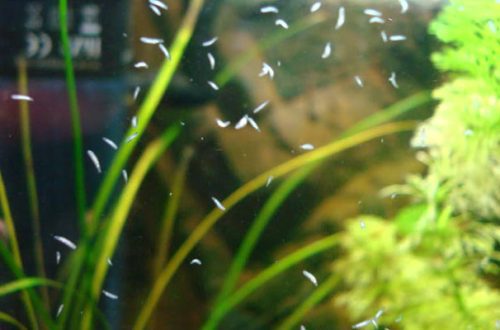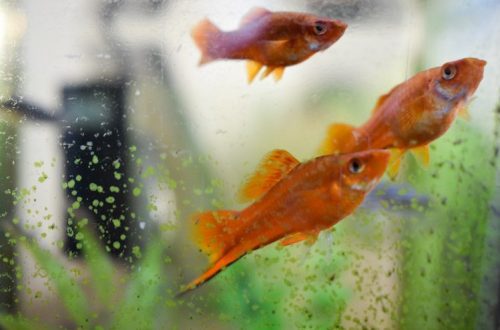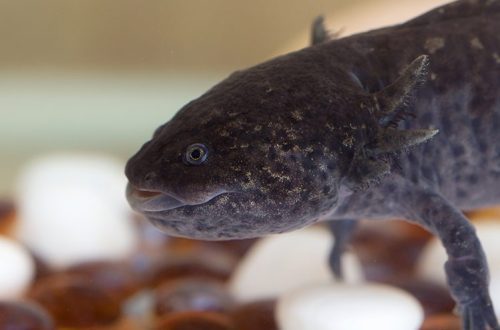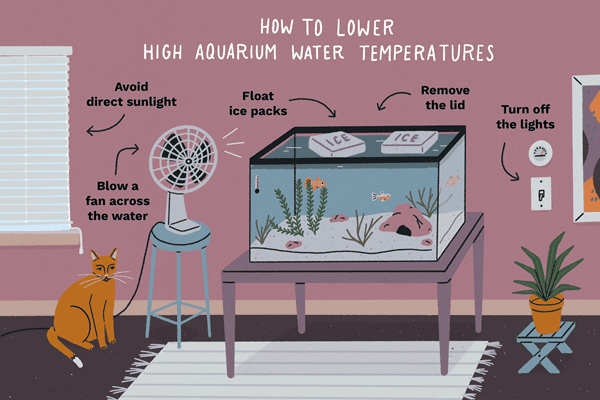
How to cool an aquarium in summer
In the hot summer months, sometimes there is a problem of overheating of the water in the aquarium due to an increase in the air temperature in the room where it is located. For example, often this happens in a room on the sunny side. The article gives several effective and at the same time cheap ways to cool water without the use of expensive equipment.
Contents
Ways to cool the aquarium in one picture
 Illustration of popular ways to reduce the temperature of the water in the aquarium using improvised materials
Illustration of popular ways to reduce the temperature of the water in the aquarium using improvised materials
Method number 1. Using ice or a “cold accumulator”
The easiest and most effective way is to add ice cubes from the freezer to the aquarium. The decrease in temperature occurs gradually as it melts, without sudden changes.
However, it has its drawbacks. Firstly, it gives only a short-term effect, and secondly, the ice may contain contaminants and / or hazardous substances that, when melted, will enter the aquarium. In addition, if you get carried away with this process, then there is a high risk of affecting the pH and dGH values. However, if you put ice in a clean food plastic bag, then some of the problems are solved.
Cold storage battery
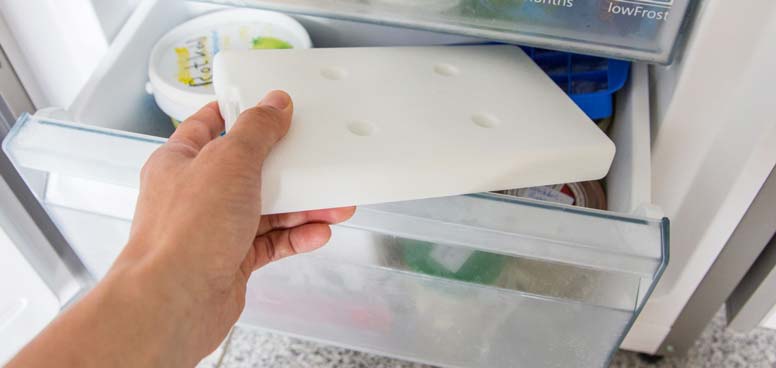 Using cold accumulators from a thermal bag to cool an aquarium
Using cold accumulators from a thermal bag to cool an aquarium
Safer and more practical are the so-called “cold accumulators” used in portable cooler bags. Floating on the surface, they do not look too aesthetically pleasing, but there is no danger of foreign substances entering the aquarium. When the batteries give up all the cold, they can be frozen again and reused.
It is advisable to use ice and cold accumulators in small tanks up to 100 liters, since they cannot significantly affect a large volume of water.
Method number 2. Replacing part of the water with cool
As with the use of ice, the effect is achieved quickly (in some cases faster), but does not last long. The main advantage is that even large aquariums can be cooled in this way. However, this method is not very convenient and potentially carries significant risks.
The added water must have a similar hydrochemical composition and at the same time not be too cold, otherwise the so-called “temperature shock” is likely to develop. It is worth remembering that for many tropical fish, sudden temperature changes of more than 5 ° C are dangerous to health, and some species are sensitive to changes even by 2 ° C.
Method number 3. Cooling the room
It’s simple – if there is an air conditioner in the room, it should be used. In this case, of course, the flow of cold air should not be directed towards the aquarium.
Method number 4. Aquarium coolers, fans
This method is based on the so-called evaporative cooling. If you continuously blow the surface of the water, then its temperature will become lower than the temperature of the surrounding air.
Aquarium cooler
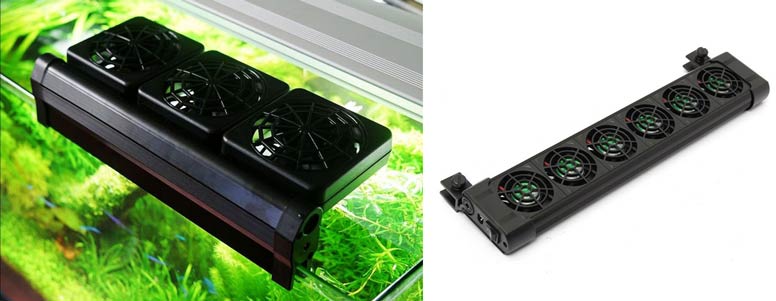 The principle of operation of the cooler in the process of lowering the temperature of the water in the aquarium
The principle of operation of the cooler in the process of lowering the temperature of the water in the aquarium
In order to cool the aquarium, you can use special miniature coolers, usually fixed on the edge of the side glass. Depending on the volume, surface area and dimensions of the device, the water temperature can be reduced by up to 4-5°C. In most cases this is sufficient.
In the absence of a special cooler, you can put an ordinary room fan next to the aquarium.
The best effect is achieved in open tanks without a lid with active aeration and surface movement of water.
The disadvantages include active evaporation, which, by the way, can be turned into an advantage by adding cool water.
Method number 5. Reduce the level of lighting
Actual for closed aquariums, where lighting systems based on fluorescent and metal halide lamps built into the lid are used. These types of lamps, if they are close to the surface, generate a lot of heat, thereby heating the water. This can be helpful during the winter months, but can cause overheating in the summer.
Reducing the number of lamps or replacing them with less powerful ones will reduce the heat generated. However, such savings can be detrimental to the plants in the aquarium.



